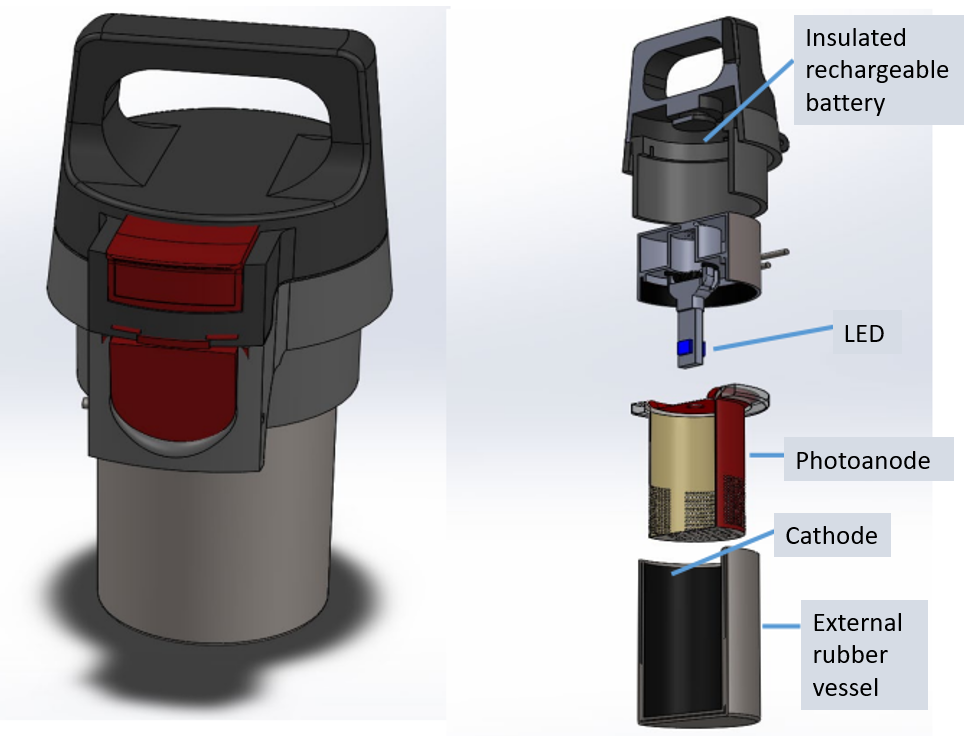Bacteria, viruses, and other harmful microorganisms pose a significant pathogenic health-related risk to safe drinking water. Disinfection by chlorination is commonly practiced, however, chlorine is a toxic chemical that typically requires careful storage and proper handling. While ultraviolet (UV) disinfection can be effective, UV-based processes generally rely on photons (light) for sterilization (photolysis), and the efficacy can be affected by factors such as lamp power, UV-dose, reaction time, and proximity of the UV light to the microorganisms. In addition, these technologies are generally unable to detoxify pesticides, herbicides, algal toxins, or other chemical (non-biological) pollutants in water.
Researchers at Arizona State University have developed a compact photoelectrocatalytic reactor with semiconductor-coated walls that, upon exposure to UV-LED light, can disinfect water with in-situ generated oxidants. The design is well suited for portable operation, completely chemical-free with a small rechargeable (optional) battery. This flexible reactor can be designed for a larger unit as a point-of-use household water treatment system. Disinfection of poor-quality water (e.g., groundwater, lake, rivers) can also be explored with this device to reduce microbial-related risks. Among the unique features of this chemical-free system are portability, ease of operation, and low energy requirements for successful operation.

Potential Applications:
- Water disinfection device for:
- Individual use (e.g., camping, travel, outdoor activities, etc.)
- Household use
- Humanitarian efforts (e.g., disaster relief)
Benefits and Advantages:
- Utilizes heterogenous catalytic surfaces to disinfect water through photoelectrocatalytic treatment
- Powered with small battery with low energy LED light source
- Small, portable device or scaled-up as a disinfection system for household
- Chemical-free and does not generate any chemical wastes or form any harmful byproducts or residuals